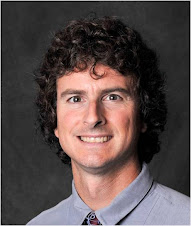James (Duck) Howard
Master of Science in Information Assurance student.
This can be complicated, so allow me to provide some background. I am employed as a contractor serving as an Information Assurance Officer (IAO) for the United States Air Force (USAF) in the Air Force District of Washington (AFDW). As a Department of Defense (DoD) information technology entity, my unit receives inspections by various DoD and USAF entities. Recently, my unit was inspected twice by the Defense Information Systems Agency (DISA). The first inspection was for one of the bases that our unit manages, and the second inspection was a newer, more intrusive inspection for our other two bases.
Our first inspection was in early September of last year, about two weeks after I finished Seminar 3 (Prevention-Human Factors) in the MSIA Program. As you may know, Seminar 3 is policy-intensive. Please keep in mind I have never considered myself a “policy guy”. I am much more comfortable with technology and technology architecture. But my new boss decided to make me the point of contact for the DISA inspectors about local policy. Admittedly, I was a bit nervous, but I resigned myself that this might be a good test of my policy skills, and even the training I was receiving through the MSIA program.
The DISA inspector arrived on the second day and spent a good deal of time asking me about where we store our policies and how available they were to our clients. He asked if we enforced Rules of Behavior and how we monitored and maintained policy compliance. And like any good auditor, whenever I answered him, he would follow up with “show me”. He went down a checklist of policies all DoD bases and commands were to maintain, and after about an hour of (sometimes grueling) questions, he thanked me for my time and left. I felt like I had just run a marathon.
That was literally the last time I heard anything about the DISA policy review.
Until late October, when the second DISA inspection was ready to begin; early one late October morning, I received a call from my boss. He wanted me to again serve as the point of contact for the DISA inspectors for local policy and initiatives. I protested at first, stating that I was not a “policy guy”.
My boss cut me short and said “That’s too bad, Duck, because you were the only guy to get 100% on the last DISA inspection, so you are now indeed The Policy Guy here…”
Occasionally in life, you have an epiphany, an eye-opening experience where you realize you have turned a corner in life. I had one such moment in October last year, and I have the MSIA program to thank for that. I have been given greater responsibilities at work in large part because of my personal and professional growth from what I am learning in the MSIA program. This story is a small, unclassified example of such an experience at work.
Oh, and we did very well in our second policy review as well.
Last week’s quiz question
What 2010 Olympian from Vermont gained unfortunate notoriety at the Turin Olympics and why?
Answer: Lindsey Jacobellis. Jacobellis was in the lead of the woman’s snowboard race when she hotdogged the last jump by grabbing her board and crashed. More than one person said Hannah Teter because of her Sports Illustrated Swimsuit photos before Vancouver. However, the question asked for someone who gained notoriety at the Turin Olympics, rather than the Vancouver Olympics. But since nobody got my intended answer, I decided to loosen up my standards a bit an accept Hannah Teter.
Winner: Dianne Tarpy
This week’s question:
What Norwich University sports team won its respective NCAA Championship in 2010?
Please send all answers to: jorlando@norwich.edu
Current competition standings:
Matt Bambrick: 3 wins |
Andrey N. Chernyaev: 2 wins |
Dianne Tarpy: 2 wins |
Sam Moore |
Autumn Crossett |
Gil Varney, Jr. |
Glen Calvo |
Thomas Reardon |
Sherryl Fraser |
Srinivas Chandrasekar |
Marc Ariano |
Linda Rosa |
Joanna D'Aquanni |
Bill Lampe |
Srinivas Bedre Christian Sandy. |










